Evaluating Universal Design of Built Environments: Stakeholder practice and perceptions
Presenter: Valerie Watchorn, Lecturer, Deakin University
Flash Talk Session
There is currently no accepted or consistent method of evaluating the application of Universal Design (UD) to the design of built environments in Australia or internationally. This leading Australian project aimed to scope existing methods of evaluation used in the design process and/or outcome evaluation of built environments, perceived strengths and weaknesses of these methods and potential strategies to improve practice.
This project was conducted in 2017 and gathered data via online survey (n=157) and semi-structured interview (n=37). A range of stakeholders participated, including industry professionals, policy makers, government officials, academics, building users and people with lived experience of disability. Data collection and analysis explored current practice of evaluating UD in the built environment and stakeholder perceptions of ways in which UD should be evaluated.
This presentation will outline the findings from this study including how many participants reported involvement in the application and evaluation of UD to the design of built environments. The differences between current practice and how stakeholders perceived UD should be evaluated will be explored. The involvement of building users and, in particular, people with lived experience of disability, was noted to be of significant value to the evaluation process but was reported to occur in practice less frequently than stakeholders preferred.
Stakeholders perceive evaluation of UD as important and a range of evaluation tools and methods are in use. This presentation will detail how stakeholders perceive UD should be evaluated and how this varies from the current practice.
